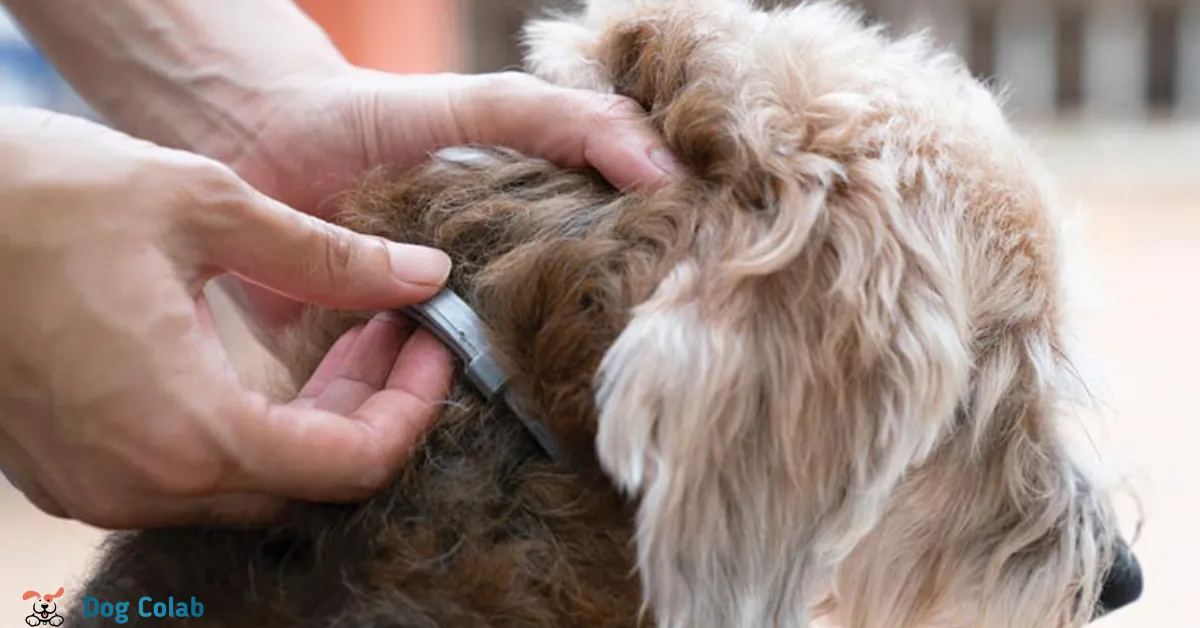Collars are an essential accessory for dogs, serving the dual purpose of identification and safety. However, the very tool that keeps our furry friends secure can sometimes lead to discomfort in the form of collar marks. Collar marks, often caused by tight or ill-fitting collars, can lead to skin irritation and discomfort.
From adjusting the collar size and choosing the right material to give the affected area proper care and allowing it time to heal, a combination of preventative measures and attentive aftercare will help your dog’s skin recover and prevent collar-related problems in the future.
In this blog post, we will discuss the safe and effective ways how to get rid of collar mark on dog and effective methods to remove collar marks and prevent them from collar-related problems in the future.
What Is the Collar Mark on Dog?
A collar mark on a dog is a visible indentation or irritation that appears on the skin around the neck area where the dog’s collar is worn. It is typically caused by the friction, pressure, and constant rubbing of the collar against the sensitive skin of the neck.
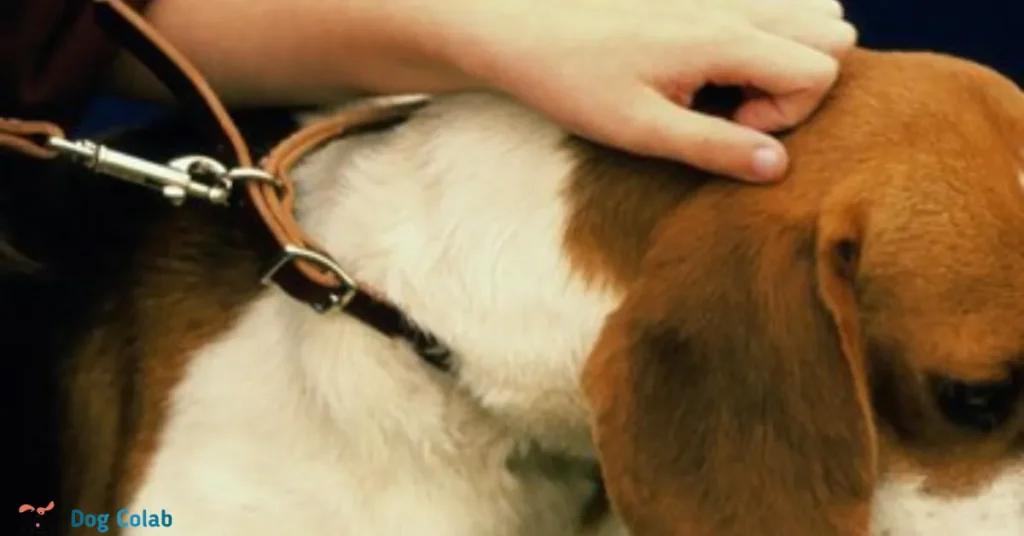
Collar marks can range from mild redness and irritation to more severe indentations or collar sores, depending on the dog’s skin sensitivity, the material of the collar, and how tight the collar is worn. These marks can be uncomfortable and even painful for the dog, potentially leading to skin issues if not addressed promptly.
How To Get Rid Of Collar Mark On Dog?
Here’s a step-by-step guide to help you how to get rid of collar line on dog.
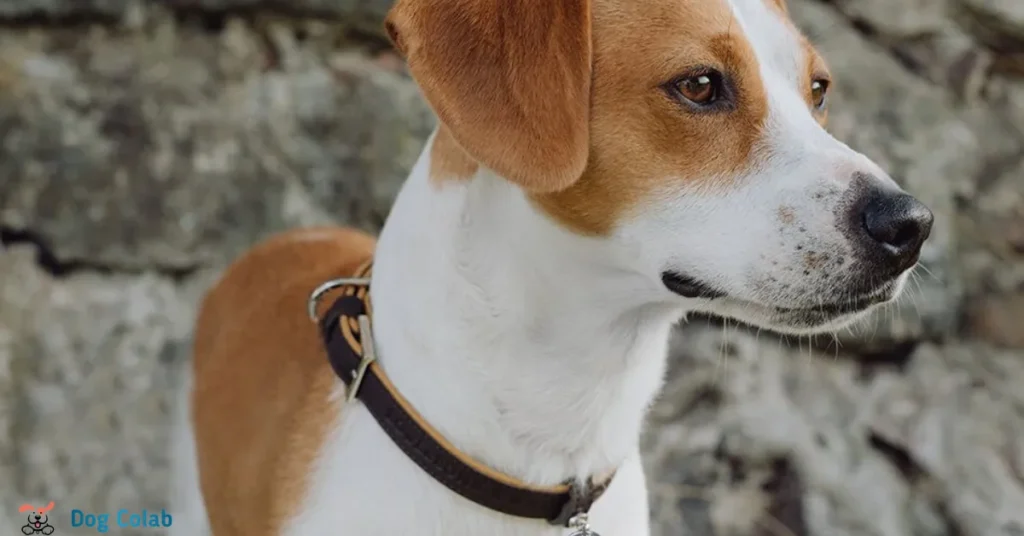
1. Assess the Situation
Examine the collar mark closely to determine the severity of the irritation and any potential skin damage. If the area appears red, swollen or shows signs of infection, consult a veterinarian before proceeding.
2. Remove the Collar
Take off the collar immediately to give the affected area relief from further friction and pressure. Give your dog’s skin a chance to breathe and heal.
3. Cleanse the Area
Gently clean the collar mark with a mild, hypoallergenic dog shampoo or a veterinarian-recommended cleanser. Use lukewarm water and a soft cloth to avoid causing additional irritation.
4. Apply a Healing Ointment
If the skin is not broken or inflamed, apply a veterinarian-approved healing ointment or gel to promote skin recovery. Avoid using human creams as they may contain ingredients that are harmful to dogs.
5. Use a Collar-Free Period
Give your dog a break from wearing a collar for a few days to allow the skin to fully heal. During this time, closely monitor your dog’s behavior to ensure they don’t scratch or exacerbate the area.
6. Use Natural Remedies
- Chamomile Tea Compress: Chamomile tea, known for its anti-inflammatory qualities, can be brewed, cooled, and applied as a compress to soothe the affected area.
- Oatmeal Paste: An oatmeal paste can provide relief from itching and inflammation. Mix oatmeal with water to create a paste and apply it to the collar mark area. Rinse thoroughly afterward.
- Witch Hazel Solution: Witch hazel is a natural astringent that can help reduce inflammation. Dilute witch hazel with water and apply it to the affected area using a cotton ball.
7. Choose a Padded Collar
If your dog requires a collar for identification or leash attachment, opt for a padded or soft fabric collar that reduces friction and pressure on the neck. Make sure it’s properly fitted and not too tight.
8. Regularly Adjust Collar Fit
Check the collar’s fit frequently to ensure it’s not too snug or causing discomfort. Two fingers should fit comfortably between the collar and your dog’s neck.
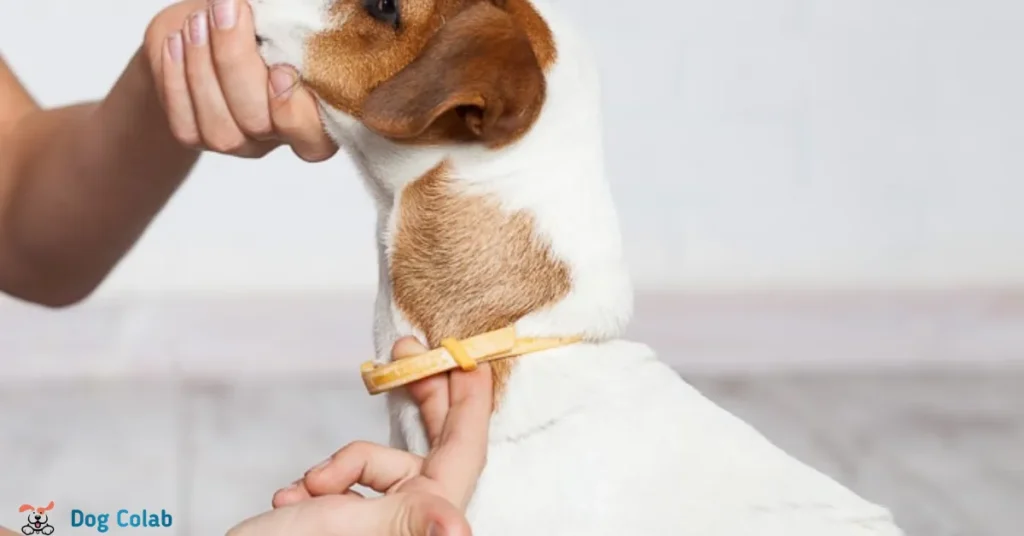
9. Practice Good Grooming
Regularly groom your dog’s neck area to keep the fur clean and prevent matting, which can contribute to collar irritation. Brush the fur gently to avoid tugging on the sensitive skin.
10. Consult a Veterinarian
If the collar mark worsens, becomes infected, or doesn’t show signs of improvement after a few days, consult a veterinarian. Professional guidance and treatment recommendations can be provided by them.
11. Consider Alternative Options
If collar marks continue to be a recurring issue, consider alternative methods of identification, such as microchipping, to reduce the need for a collar altogether.
Tips For Preventing Collar Marks on Dog
Collar mark on dog can be uncomfortable and bothersome for your furry friend. To prevent collar marks and ensure your dog’s well-being, consider these strategies.
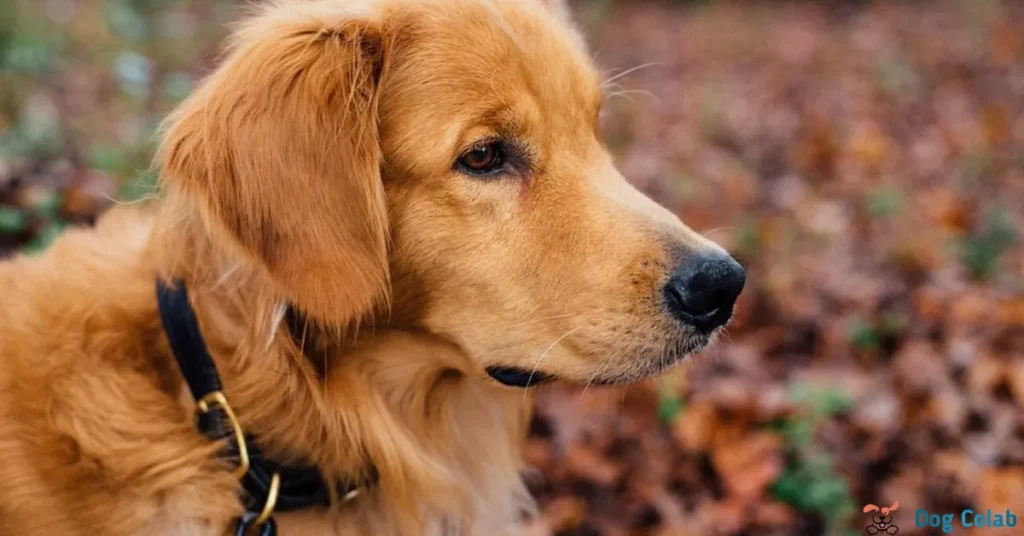
- Proper Fit: Ensure your dog’s collar is not too tight. When your dog grows, regularly check and adjust the collar’s fit. You should be able to easily slip two fingers under the collar.
- Padded Collars: Opt for collars with padding to reduce friction and pressure on the neck area. These padded collars distribute the pressure more evenly and minimize the risk of marks.
- Collar-Free Periods: Give your dog some collar-free time each day to allow their skin to breathe and recover. This is especially important for dogs with sensitive skin or those prone to irritation.
- Regular Grooming: Keep your dog’s fur clean and well-groomed to prevent matting and tangles that can contribute to collar marks. Regular brushing also helps maintain healthy skin and coat.
- Hydration and Nutrition: Proper hydration and a balanced diet contribute to healthy skin. Well-hydrated skin is less prone to irritation and marks.
- Alternate Collar Types: Consider using harnesses instead of collars, especially for dogs that pull on their leash. It is more comfortable to wear a harness because it distributes pressure evenly across the body.
Reading Tip:- Does pulling a dog’s collar hurt them.
How To Get Stains Out of Dog’s White Fur?
Maintaining the pristine appearance of your dog’s white fur can be challenging, but with the right approach, you can effectively remove stains and keep their coat looking its best. Here’s how.
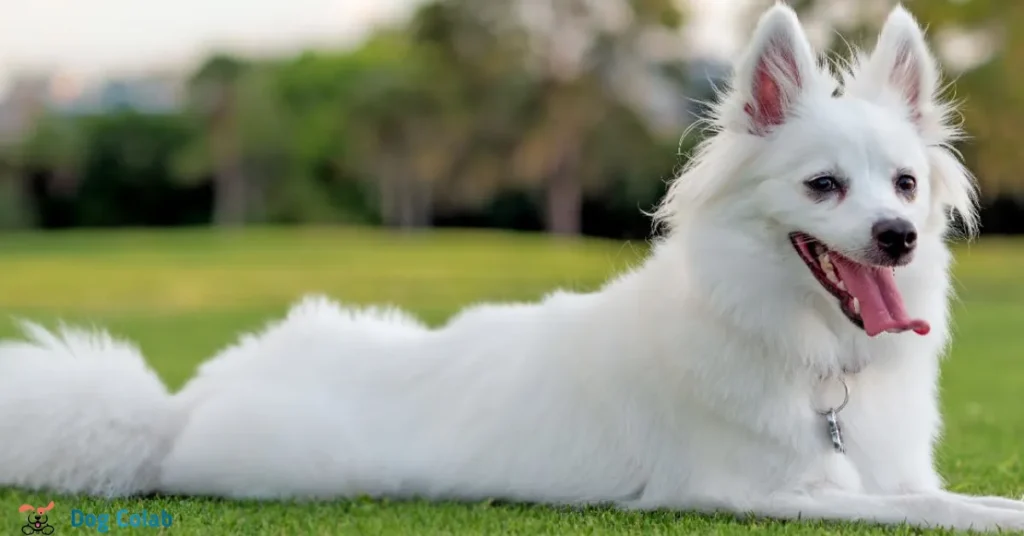
- Use Dog-Friendly Shampoo: Wash your dog with a high-quality, dog-safe whitening shampoo. These shampoos are specifically formulated to remove stains and brighten white fur.
- Spot Cleaning: For small stains, create a mixture of mild dog shampoo and water. Gently rub the mixture onto the stained area, then rinse thoroughly.
- Baking Soda Paste: Make a paste by mixing baking soda and water. Apply the paste to the stained area, allow it to sit for a few minutes, then scrub gently.
- Hydrogen Peroxide Solution: Dilute hydrogen peroxide with water (1:1 ratio) and apply it to the stain. Be cautious not to get it in your dog’s eyes or mouth. Rinse thoroughly after a few minutes.
- Cornstarch: For greasy stains, sprinkle cornstarch on the affected area. Let it sit for a while, then brush it out. The cornstarch can help absorb oils and grease.
- Regular Grooming: Brush your dog’s coat regularly to prevent mats and tangles, which can harbor dirt and stains.
Conclusion “How To Get Rid of Collar Mark on Dog”
Collar mark on dog can be uncomfortable for your furry companion, but with proper care and attention, you can effectively treat and prevent them. By choosing the right collar, practicing good hygiene, and providing your dog with regular breaks from wearing a collar, you can ensure their neck remains healthy, comfortable, and irritation-free. Remember that each dog is unique, so tailor your approach to suit your dog’s individual needs. If in doubt, always consult a veterinarian for guidance.
NOTE:- More information can be found by clicking this link.
FAQs
1. Do collars damage dogs fur?
Collars can cause fur damage if too tight or if a dog excessively scratches at them. Properly fitted collars and regular grooming can help prevent fur matting or breakage.
2. How do you get rid of a dog’s collar rash?
To treat a dog’s collar rash, remove the collar, clean the affected area with mild soap and water, and ensure it’s dry. Apply a pet-safe rash cream or ointment. If the rash persists, consult a vet.
3. How do I stop my dogs collar from chafing?
To prevent chafing from your dog’s collar, ensure it’s the right size, not too tight. Opt for padded collars, use nylon or leather materials, and regularly check for any signs of irritation or discomfort.
4. Should my dog wear a collar all day?
It’s generally safe for your dog to wear a collar during the day, but remove it at night to prevent discomfort and potential hazards. Ensure the collar isn’t too tight and has proper identification tags.
